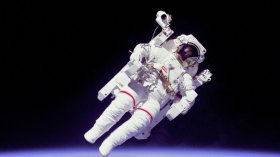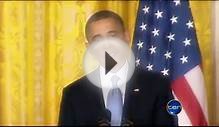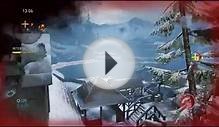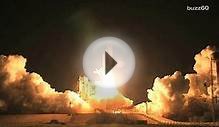
 So you want NASA to fly you to the moon and let you play among the stars. Maybe let you see what spring is like on a-Jupiter and Mars? Well, you're going to need more than a solid Sinatra impression to get NASA to accept you into its spacefaring ranks—a whole lot more.
So you want NASA to fly you to the moon and let you play among the stars. Maybe let you see what spring is like on a-Jupiter and Mars? Well, you're going to need more than a solid Sinatra impression to get NASA to accept you into its spacefaring ranks—a whole lot more.
First, the bad news: NASA's already hyper-exclusive astronaut program has been shrinking precipitously since the start of the century—egged on by the demise of the manned shuttle program. Between 2000 and 2011, NASA's astronaut ranks have shrunk from 150 to just 61. A 2011 study conducted by the National Research Council, however, warned that the US may find itself short of space cowboys unless it starts hiring more. And that's where you come in.
Get in the Pool
NASA began its astronaut hunt in 1959, shortly after the agency itself sprang to life, though the original crop of extraterrestrial flyboys were cultivated exclusively from members of the armed forces. Out of the entire US military systems only seven—all men, all pilots—were tapped to become the first astronauts. However, much has changed since the start of the Cold War. Now anybody who meets the basic requirements, regardless of race or gender, can apply to NASA.
Understand however, that your job as an astronaut won't just be you floating around waiting to talk to school kids back on Earth. This is physically and mentally exhausting work. As the NASA Astronauts website explains:
Astronauts are involved in all aspects of assembly and on-orbit operations of the ISS This includes extravehicular activities (EVA), robotics operations using the remote manipulator system, experiment operations, and onboard maintenance tasks. Astronauts are required to have a detailed knowledge of the ISS systems, as well as detailed knowledge of the operational characteristics, mission requirements and objectives, and supporting systems and equipment for each experiment on their assigned missions.
Long-duration missions aboard the ISS generally last from 3 to 6 months. Training for long duration missions is very arduous and takes approximately 2 to 3 years. This training requires extensive travel, including long periods away in other countries training with our International partners. Travel to and from the ISS will be aboard the Russian Soyuz vehicle. Consequently, astronauts must meet the Soyuz size requirements.
What's more, you must be qualified for the position to which you are applying and each crew position—pilot, commander, mission specialist, and payload specialist—has slightly different requirements.
General Astronaut Candidates (Non-Piloting background)
- You have to be a US citizen (either natural or naturalized) or hold dual citizenship between the US and another nation.
- You need a bachelor's degree from an accredited institution in engineering, biological science, physical science, or mathematics. These are the only fields that NASA is interested in.
- You must have "at least 3 years of related, progressively responsible, professional experience or at least 1, 000 pilot-in-command time in jet aircraft" following the award of your degree. That means you either go into the business world, pursue a doctorate (which counts as three years experience), or start flying jets for the US military or the commercial airlines. You can also become a teacher, as k-12 educators are often recruited by the agency.
- You have to be in shape and able to pass the NASA long-duration space flight physical, as well as have correctable vision to 20/20 in each eye.
Pilots and Commanders
Those looking to command a spacecraft must meet the following requirements:- You must hold a bachelor's degree from an accredited institution in engineering, biological science, physical science, or mathematics. Bonus points for advanced degrees, wicked high test scores, and the quality of your institution.
- You need at least 1, 000 hours pilot-in-command time in jet aircraft. Test pilots are highly sought after.
- You must be able to pass a NASA space physical with the following added prerequisites:
- Distant visual acuity: 20/100 or better uncorrected, correctable to 20/20 each eye.
- Blood pressure: 140/90.
- Height: between 62 and 75 inches.
Mission Specialists
Mission Specialists (and, by extension, the subclass of Payload Specialist) handle everything except flying the spacecraft and commanding. That includes monitoring consumables usage, performing spacewalks, operating the remote manipulator arm to catch incoming Dragon capsules, and more. Basic requirements for this position differ slightly from the general astronaut list above. While you still must have a bachelor's degree, be a citizen, and log 1, 000 hours of flight time, you also need to measure up to the following physical specs when passing your NASA space physical:
- Distance visual acuity: 20/200 or better uncorrected, correctable to 20/20, each eye
- Blood pressure: 140/90 measured in a sitting position
- Height between 58.5 and 76 inches
How to Apply
If you meet these basic requirements and think you've got what it takes to go to space, fill out a NASA application: either the civilian version or the one for active duty military. But understand that your chances, right out of the gate, are very slim. NASA only picks classes of new candidates once every presidential term these days, and out of the 6, 000 to 8, 000 applicants each round, only 8 to 35 actually make it in.
"If a student comes to me and says, 'I want to be an astronaut, ' I tell them, 'Great: Excel in your coursework, go get a piloting license and learn to play the guitar, '" John Armstrong, a professor of physics at Weber State University, told USA Today.
Get Your Foot in the Pod Bay Door
If your application has gotten past the preliminary screening process, you and 100 or so other finalists will be invited to a week-long ordeal of interviews, medical screenings, background checks, and orientation films. The interviews are going to be your biggest hurdle.
RELATED VIDEO












